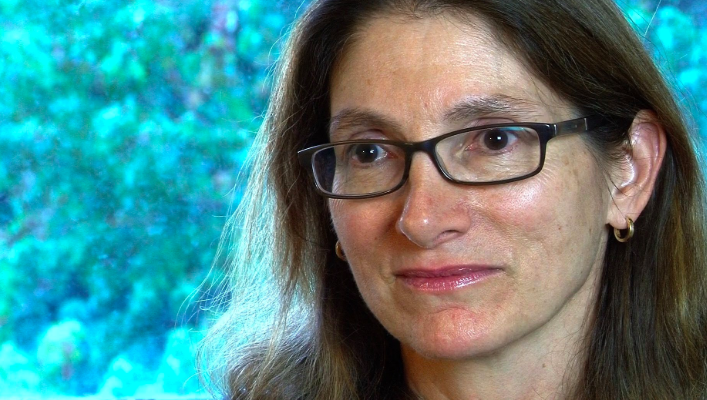Katie Hafner has spent most of her career in journalism, writing about tech and health care for The New York Times; she has also written extensively for Newsweek and BusinessWeek, among other publications. She is also the author of books on a wide range of subjects.
 Most recently, Hafner published Mother Daughter Me, a memoir of three generations of women living together under one roof. At the beginning, Hafner hoped the time together would help resolve old family conflicts like her mother’s divorce, neglect, drinking, and frequent moves. The book is honest and raw and testament to the idea that what doesn’t break, develops a new kind of resilience.
Most recently, Hafner published Mother Daughter Me, a memoir of three generations of women living together under one roof. At the beginning, Hafner hoped the time together would help resolve old family conflicts like her mother’s divorce, neglect, drinking, and frequent moves. The book is honest and raw and testament to the idea that what doesn’t break, develops a new kind of resilience.
Hafner’s other books explore the origins of the Internet (Where the Wizards Stay Up Late, with Matthew Lyon), computer hackers (Cyberpunk, with John Markoff), German reunification (The House at the Bridge), and the pianist Glenn Gould (A Romance on Three Legs).
For more on her work, visit katiehafner.com.
Charlie Euchner: Over your career, you have spent a lot of time covering tech. But you have also explored some intimate topics, like your relationships with your mother and daughter and the death of your husband.
Katie Hafner: The vast majority of my writing has been journalistic – not in the least personal — with the exception of my memoir, Mother Daughter Me, and my open letter to Sheryl Sandberg, following the death of her husband. While working on the memoir, I was still doing my straight-ahead journalism, and I’m actually currently working on a novel while also doing stories for The New York Times. I’m not sure that one really helps the other, except that it’s nice to get a break from each. The journalism I do these days — writing about healthcare, with a focus on the elderly — can get get very intense, so it’s nice to go to a different place on a regular basis. Then again, writing memoirs and fiction gets very lonely, so it’s nice to crawl out of that little isolation chamber on a regular basis.
CE: When you delve into a long work like A Romance on Three Legs, or your other books, how do you do it? What’s the process? Besides writing something comprehensive about a topic, how do you spot the details and moments that give your writing something special?
KF: Well, when you’re writing a book of non-fiction, you really have to let the topic become your Magnificent Obsession. When I worked on The House at the Bridge, my book about Germany, I lived, ate, and breathed post-reunification Germany. I drove a Trabant, one of those two-stroke-engine cars people in the former East Germany waited 20 years to get. With A Romance on Three Legs, I immersed myself in everything Glenn Gould/Steinway for several years, spending a great deal of time at the Gould archives in Ottawa. I really love doing that. Nothing gives me more pleasure than feeling like I know a topic inside and out. And, since journalists get to move from topic to topic, I always get deeply curious about the next new thing. The trick is finding just the right subject in which to immerse yourself. It must be a terrible thing to be bored by the topic you’re writing about.
CE: The hardest and most important thing for all writers is to find a way to be honest and unsparing. That, I think, you achieved in Mother Daughter Me. You dive into the difficulties of your relationships with rare candor, allowing yourself to be exposed as you explore the complexities of family relationships. How do you think about that?
KF: Unless a writer is honest – particularly about herself – the reader will lose patience, and trust, and eventually interest. Readers aren’t stupid, and they can smell a dodgy narrator from fifty paces. There were moments, when my mother was living with my daughter and me, when I was just terrible to her. And I tried to own up to that as much as possible.
Then there are the more distant memories, some of which are, unfortunately, etched permanently in my mind. Then again, don’t forget that this memoir reflects my recollection of how things happened, and memories can be tricky things. So I consulted with my sister quite a bit when it came to memories of our mother and her periods of drinking too heavily. My sister was extremely detailed in her descriptions. Her memory was razor-sharp.
This brings me to the topic of honesty and “essential truth” versus accuracy. There’s one scene in the beginning of Mother Daughter Me where my mother is the only person in the car with me during a long drive, from San Diego to San Francisco. In reality, someone else who shows up later in the book was in the car as well. In the first draft, I had him in the car, but my editor at Random House thought that was too much in the way of characters to introduce for the beginning of the book. I said to her, “But he was there, and did most of the driving.” To which she said something interesting. She said that if it did not violate the essential truth of the scene (i.e. picking up my mother in San Diego and bringing her to San Francisco to live with my daughter and me), it wasn’t absolutely necessary to have him be in the car.
But here’s the bottom line: My mother disagreed strongly with much of my account, which in some places is quite raw. After the book came out, she rejected me and took actions that inflicted the maximum possible pain on me. Not a happy ending.
CE: In addition to writing at all levels–newspapers, magazines, books–you also have taught writing at Cal-Berkeley. What are the common challenges of writing and teaching? And how are they radically different? In what ways has teaching taught you about the writing process? Did it expose any of your own challenges–and give you ideas to address them?
KF: I’ve taught both journalism and memoir writing, and they are very different beasts. Journalism is a two-limbed discipline: there is the reporting of a story, then the writing. Students tend to be better at one than the other (much as professional reporters are). So I try to help nurture the weaker limb.
I also teach an annual week-long memoir writing workshop at The Esalen Institute in Big Sur. It’s one of the most enjoyable weeks of my year, and also one of the most exhausting. People come to you with their heart (in the form of an extremely personal, often painful life story) in their hands, and you have to be very respectful of that. At the same time, I make it clear that I am not a therapist, I am a writing instructor. Once they understand that, we get down to the business of giving shape and voice to their stories.
I am not one for whom writing has ever come easily, and when I tell students this, it seems to help them a lot with their own writing struggles.
At the same time, I tell students that in order to write, you must read and read, and then read some more. Read fiction, memoirs, non-fiction, biographies, and – above all – poetry. I’m not saying read tough stuff. There’s a lot of Dickens I’ll never be able to get through, and definitely not James Joyce’s Ulysses, or any Proust for that matter. But I adore Angle of Repose and To Kill a Mockingbird and I Capture the Castle, pretty much anything by Anne Tyler, much of Ann Patchett, and all of Joan Didion’s nonfiction. In short, there is no way to become a writer without exposure to the masters. Surgeons don’t just start cutting people open. They watch and watch, see how it’s done, and then they do it themselves. To wit: I live just three hours north of Esalen, so I drive there, and pile about 50 books and a sheaf of poems into my car, and set up a lending library for the week in the workshop room.
CE: Writing, I am sure you agree, is a craft. It’s about building skills and combining them to create a durable and pleasing product. What specific advice have you gotten to hone your specific skills? Can you offer one or two “tricks of the trade” that helps you to carry off projects?
KF: When writing my first nonfiction book, I made myself write nonstop, without getting up from my chair, for a certain amount of time, even if it was just 20 minutes. I pretended I was on a journalism deadline (when, in fact, the deadline was a year away). Then, after those 20 minutes had passed, I gave myself a five-minute break in which I could do anything I wanted, as long as I got up from my chair: I could go to the bathroom; eat a bologna sandwich; water the plants; dance a jig.
I’m writing fiction now, which terrifies me. So I feel like I have to write in a very confined space. I take 4-by-6 index cards and roll them into – yes — a typewriter, and fill up the cards, one by one. If I don’t have my typewriter with me, I fill virtual index cards in the notes app on my iPhone. I might come away with just 50 words but feel like I’ve just written War and Peace. That’s how hard fiction is for me.


